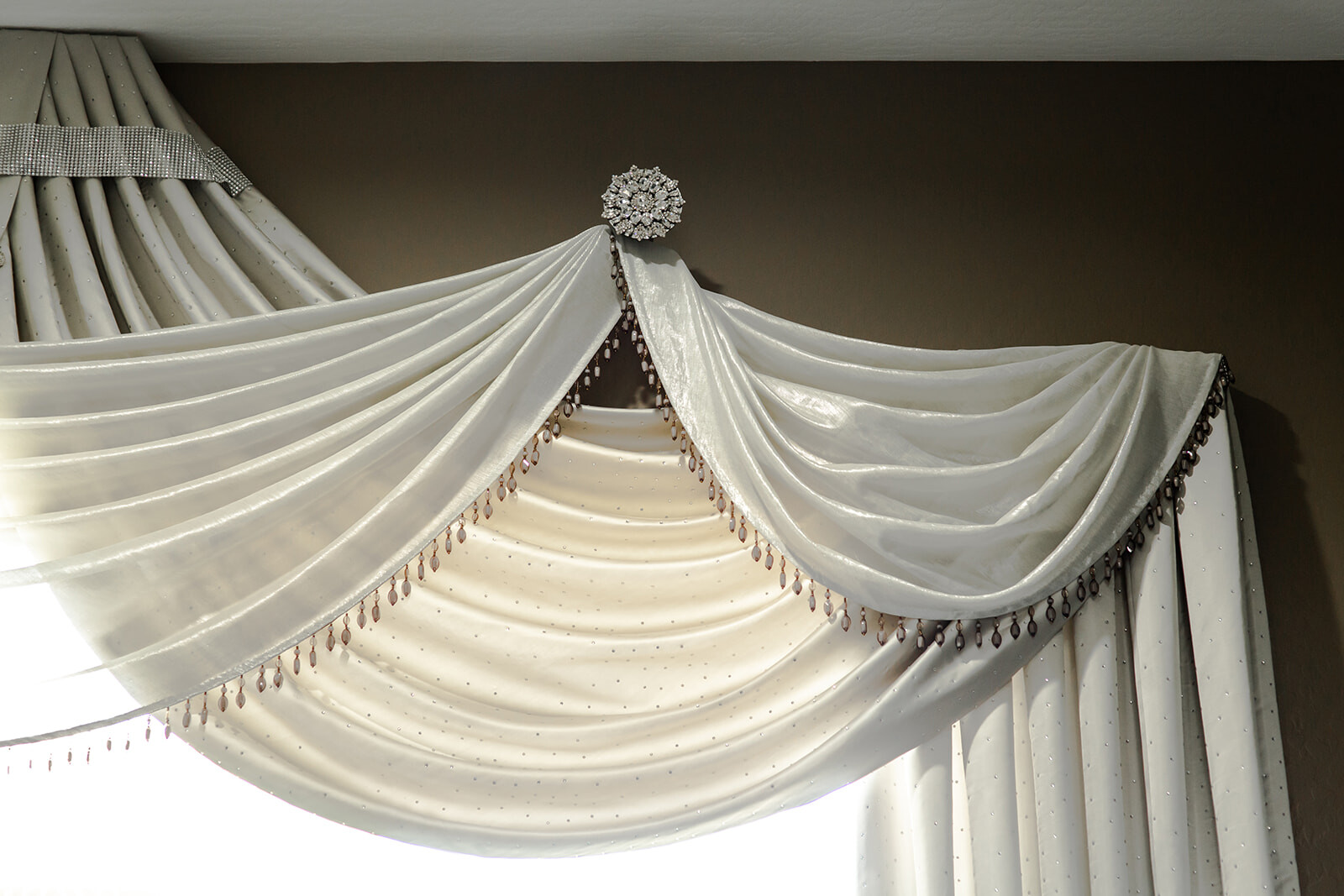When it comes to interior design, window treatments might often be an afterthought, but make all the difference in creating a cohesive, polished look in any room. Not only do they bring in warmth and privacy, but they also provide an opportunity to play with style, color, and light. This guide dives deep into the essentials of choosing the perfect window treatments.
Styles
Choosing the right style of window treatment sets the tone for your space. Here are the three primary options and the unique benefits each brings:
Curtains & Drapes
Curtains and drapes are among the most versatile window treatments available. They range from casual to formal and are ideal for controlling light and adding texture to a room.
Curtains are generally lighter and ideal for a casual look, perfect for living rooms and kitchens. They typically aren’t meant for privacy, rather are used for aesthetic purposes.
Drapes tend to be more formal and made with heavier materials, often lined to block out light, which can be great for creating privacy in bedrooms.


Sheers
Sheers are a beautiful way to keep the natural light in a room but diffuse it ever so slightly, giving the perfect balance of softness and brightness. These lightweight fabrics create a soft, airy look that enhances any room’s ambiance. These are perfect for rooms and spaces where natural light is desired and there isn’t a need or want for privacy. If privacy or light dimming might be wanted or needed in this space, sheers are easy to layer over thicker fabrics to achieve those desires.
Shades
Shades are a practical option that offers a streamlined look. They come in various styles, but the ones we recommend are Roller Shades or Roman Shades.
Roller Shades provide a clean, minimalist look and are great for rooms where you want a more understated look. These roll up at the top with the pull of a cord or a corded lift system and give the window a clean, modern appearance that blends well with almost any design style, depending on the fabric you select.
Roman Shades have a more luxurious appearance. These lay flat against the window, showing off the pattern of the fabric and a pop of color. As it’s opened, the shade fabric stacks evenly, creating a billow effect at the top of a window, giving an air of elegance when raised.


Either of these options blend both form and function in both casual and formal rooms, and pair well with drapes, curtains, or sheers.
Materials
The material you choose for your window treatments impacts their look, feel, and function. Weight and texture affects the amount of light that shines through and how well it holds up to sun exposure. Here’s a breakdown of popular materials for each style:
- Curtains & Drapes are typically made from cotton, linen, polyester, silk, or velvet. Cotton and linen offer a casual look, while silk and velvet lend a luxurious touch. If you have pets and need a fabric that is hair-resistant, we recommend microfiber, velvet, canvas, or any synthetic materials.
- Sheers are typically made from lightweight materials like voile, lace, or linen blends, allowing for gentle light diffusion.
- Shades offer many material options such as fabric (for softness and versatility), bamboo (for a natural, eco-friendly vibe), and synthetic materials like polyester blends, which are durable and fade-resistant.
Sizing
Getting the right size for your window treatments is key to a polished look. Here’s what to keep in mind:
- Length: Floor-length curtains and drapes are standard and add elegance, while window sill-length curtains can give a room a more casual feel.
- Width: To create a full, rich look, curtains should be 1.5 to 3 times the width of the window. Shades should be slightly wider than the window to ensure complete coverage.
- Mounting Height: Hang curtains high above the window frame to make ceilings appear taller. Shades can be mounted either inside or outside the frame, depending on the look you want.
Hardware
The hardware you choose for your window treatments plays a big role in the overall look and functionality. From rods to finials, here’s what to consider:
Curtain Rods are available in various finishes like metal, wood, and acrylic. These can complement or contrast with your treatment style. Choose a finish that ties in with your room’s overall style.
Mounting Brackets are used to secure your rods to the wall. Consider adjustable brackets if you want more flexibility with the positioning of your curtains or drapes.
Finials are the decorative ends of curtain rods, and they come in countless styles, from simple caps to elaborate designs. Match them to your room’s style for added impact or a muted statement.

Window treatments are more than just a finishing touch—they’re an integral part of your room’s design. By choosing the right style, materials, sizing, and hardware, you can create a balanced, well-designed space that complements both your home and your personal style. Whether you prefer the luxurious look of drapes, the sleek appeal of shades, or the airy feel of sheers, there’s a window treatment that’s perfect for your space.
